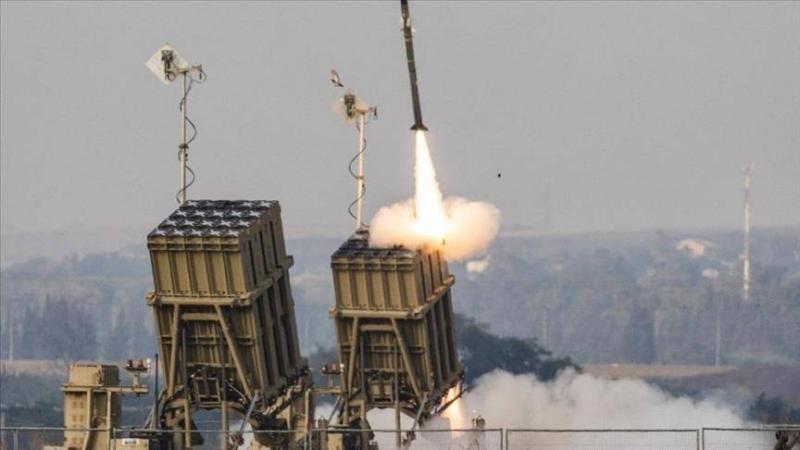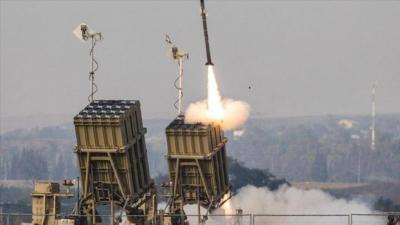As the exchange of fire between Israel and the Lebanese Hezbollah group continues almost daily along the Israeli-Lebanese border since October 8, questions arise about Israel's defensive capabilities in the event of a full-scale war. According to Bloomberg, Israeli officials expect a broader conflict if the United States and France fail in their diplomatic efforts to end the fighting. It is believed that Hezbollah possesses an arsenal of over 150,000 rockets, including long-range and precision-guided missiles that can reach deep into Israel and target major cities and strategic locations. The outbreak of a full-scale war could mean thousands of rockets directed daily at Israel, which could overwhelm and potentially invade it.
What air defenses does Israel possess?
**Iron Dome**
The Iron Dome is considered one of Israel’s most active and well-known air defense systems, having intercepted thousands of rockets fired by Hezbollah and other groups since 2011. Developed by Rafael Advanced Defense Systems in partnership with Raytheon Technologies from the United States, the system has been designed since 2014 to counter projectiles and drones with ranges from 4 kilometers to 70 kilometers. The Israeli military claims that the Iron Dome intercepts 90% of these projectiles aimed at populated areas. In April, the Israeli military announced the operation of a mobile maritime version of the Iron Dome, which could be used to thwart Hezbollah attacks targeting gas fields or Israeli naval vessels.
**David's Sling**
In 2017, Israel installed a medium- to long-range interceptor missile known as "David's Sling," developed by Rafael and Raytheon. David's Sling is designed to detect and destroy ballistic missiles, cruise missiles, and drones, operating within a range of up to 200 kilometers, covering southern Lebanon and Gaza.
**Arrow**
Israel also possesses the advanced missile defense system known as "Arrow," which developers claim can intercept missiles launched from distances of up to 2,400 kilometers and can do so above the Earth's atmosphere, where long-range ballistic missiles operate. The Arrow system can be activated if Israel faces multiple simultaneous attacks.
**Iron Beam**
The Israeli military is also testing another system called "Iron Beam," which uses laser beams to intercept projectiles launched from close range at a lower cost than the Iron Dome. The Iron Beam project is not expected to become operational before mid-2025.
Can these systems be overcome?
Hezbollah’s attacks have caused damage in northern Israel since October 8 using drones, many of which are capable of infiltrating Israeli defenses. It is believed that the group is working to increase its stockpile of such drones. Additionally, the Israeli military has acknowledged that its air defenses, including the Iron Dome, could be overwhelmed if a large number of projectiles are launched simultaneously. Israel expects that Hezbollah could fire approximately 3,000 rockets and shells daily during a war, far exceeding the capacity of the designed interception systems.
Some of Israel's newer air defense systems have only recently been tested, with the "Arrow 3" system, jointly developed by Israeli Aerospace Industries and Boeing, achieving its first battlefield success in November 2023 when it intercepted a missile launched by the Houthi group in Yemen toward southern Israel. The David's Sling batteries intercepted missiles fired from Gaza in May. Both systems were successfully used during an unprecedented Iranian missile bombardment on Israel on April 13, during which Israel and its allies intercepted 99% of the drones and missiles launched before most entered Israeli airspace. In the most recent case, Israel had received prior warning of the attack and assistance from the U.S. and the U.K., conditions that may not be repeated during a prolonged war with Hezbollah that could last weeks or months.




